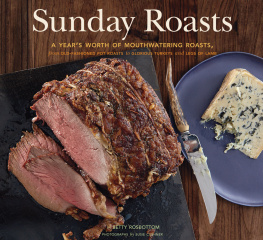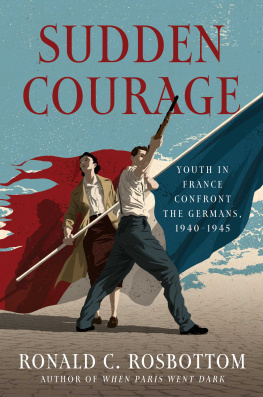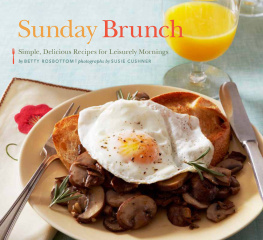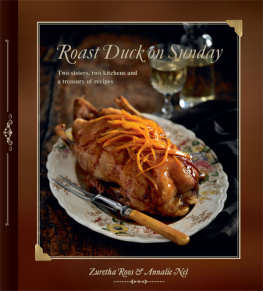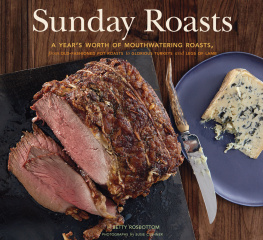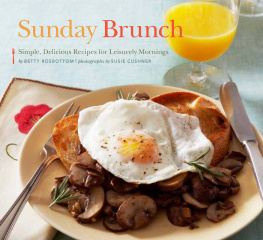by BETTY ROSBOTTOM
photographs by susie cushner


For Mary Francis, Emily Bell, and Diana Tindall. With gratitude for sharing your creativity, your talents, and most especially your friendship.

This book came to life because of my editor, Bill Leblond, who believed in the idea and did not let it die. Many, many thanks for your faith in this project, your guidance, and your wise counsel.
Lisa Ekus, my agent, and all her group, especially Daniele Mathras, gave me support and advice every step of the way.
No cookbook can be written alone. Mary Francis, Emily Bell, and Diana Tindall, my incredible kitchen team, spent hours helping develop and test the recipes for this collection. There are not enough superlatives in the dictionary to describe their dedication and friendship.
Mary Francis also put her stellar computer skills to use, moving documents and material from one virtual place to another with lightning speed. She also took charge of getting the recipes to the testers and then compiling their reviews.
Thanks to Debra Baughman of the National Cattlemens Beef Association and to Mary Bartz for sharing their vast knowledge of beef cuts and roasting.
Sheri Lisak and June McCarthy, longtime colleagues, efficiently finetuned the recipes. They tried variations, kept careful notes on timing and temperatures, and made invaluable suggestions along the way.
A group of dedicated cooks spread across the country volunteered to test the recipes for this collection. Week after week, they carved time from busy schedules to cook roasts and side dishes and then offer super feedback (pun intended!). Thank you Wendy Kersker Ninke, Marilyn Cozad, Jackie Murrill, Ron Parent, Betty Orsega, Cindy Kurban, Marilyn Dougherty, Carroll Vuncannon, and Bob Corea.
Talented novelist Elinor Lipman helped me find the right titles for the chapters, while Ellen Ellis, a good friend and gifted writer, made my words sing.
Thanks to Sarah Billingsley, Doug Ogan, Sara Schneider, Tera Killip, Peter Perez, David Hawk, and the staff at Chronicle Books, who are warm, enthusiastic, and extraordinarily creative. What a joy it is to do this book, our fifth together. To Susie Cushner, Maggie Ruggiero, and Randi Brookman Harris, thanks for the beautiful photographs.
My son, Mike, and my daughter-in-law, Heidi, and my precious grandkids, Edie and Griffin, sampled roasts (many far from perfection) on holidays and visits to my house, rarely with complaint and often with helpful critiques.
My husband, Ron, deserves a huge hug. Night after night he ate roasts, often the same one several times within a week. He washed piles of dirty dishes, edited pages of text, offered psychological therapy when needed (often!), and best of all interrupted my worrying with one of his jokes!




A Sunday well spent brings a week of content!
A PROVERB
Some of my earliest childhood memories have to do with a culinary tale, which became a legend in our family. It seems that in the early days of my parents marriage, my mother thought that she should invite my dads boss for dinner and decided to make roast duck as the main course. Her efforts turned out not to be promising. A new and totally inexperienced cook, she overcooked the bird, rendering it dry and tasteless. She served it anyway, and the guest, a Southern gentleman through and through, tried desperately to eat the dish set before him. However, he had false teeth and could barely get down a single bite of the stringy fowl. Fortunately, my dad kept his job, and my mother learned how to roast. In the years that followed, she produced many delicious roasts of beef, ham, and chicken, but she never again pulled a duck from her oven!
Roasts were always special at our house whether they were for family or company meals, and I think thats true for most of us today. A roast is never an afterthought. And if in the past cooks (like my mother) seemed to only turn to that triumvirate of standbysroast beef, roast chicken, and hamthats no longer the case.
There are countless possibilities for what to roast today and endless ingredients that enhance flavor. In this collection, youll find a chapter that features beef and another that highlights pork, two perennial favorites. Another section has pages devoted to roasting chicken and its interesting relativesturkey, Cornish hens, and yes, even duck. Lamb and veal both yield cuts perfect for roasting, so youll find a chapter that focuses on these tempting meats too. Another chapter is devoted to treasures from the sea, including salmon, cod, halibut, and tuna, which all take to oven cooking beautifully.
What you serve with a roast is also important, since side dishes should complement, not compete, with the star attraction. In this collection theres a useful chapter that includes familiar accompaniments with innovative twists as well as plenty of delectable new creations. Theres also a final section that features recipes for robust chutneys, savory relishes, and seasoned buttersthose essential little extras that make roasts of all manner shine.
Although you can roast on any day, Sunday is a time when many cooks have a few free hours at home, unencumbered by weekday work and schedules. What better way to spend part of that day than turning out a beautiful roast to savor with family and friends. And those leftoverswell, they are perfect for the rest of the week.
THE ART OF ROASTING
Whether you are roasting a pepper-coated beef sirloin, a big plump chicken brushed with herb butter, or a whole salmon side seasoned with soy and orange juice, delicious aromas are certain to waft from the oven and permeate your kitchen. These suggestive, fragrant scents, heralding the dish to come, are one of the reasons that roasting has not lost its popularity since the days when cavemen cooked meat on a spit. Roasting produces great contrasts in textures. The exterior of roasted foods is often well browned, even crusty on occasion, while the interior remains moist and tender. Anticipating what lies beneath the toasty outside is one of the great pleasures of a roast.
Roasting is an easy technique to master. You dont need to hover over a roast; once it is prepped, you place it in the oven, and it practically cooks itself. For todays time-deprived cooks, roasts offer another dividend. I often serve a roast one night and then use the leftovers imaginatively on another.
The word roast is both a noun and a verb. A roast is the piece of meat that is being cooked and to roast is the method used to cook it. So what constitutes a roast? Technically its a piece of meat, poultry, or fish that is cooked in the oven and is usually large enough to serve more than one person. Although many roasts are cooked uncovered without any liquids, others profit from the addition of moisture. The ever-popular pot roast, for example, simmers in aromatic liquids and is roasted under a lid, as are roasted lamb and veal shanks.

